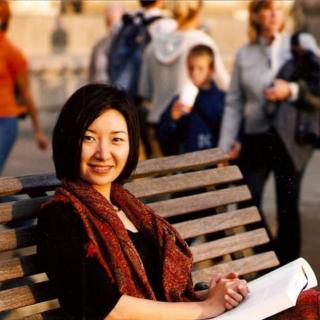
介绍:
As fine arts feels removed from everyday life, a Chinese researcher Li Shubo with the University of Oslo published a collection of essays entitled "Pictures must be Miraculous," trying to equip Chinese readers with an ability to appreciate fine arts.
We did a small survey on Beijing&`&s street to find out if they visit galleries regularly.
Among the six people we asked randomly, no one go to the galleries very often. Only one young mother had appreciated artworks up-close. The only purpose was to let her child to feel the atmosphere.
"No, I don&`&t go to galleries. I don&`&t have time and there&`&s no gallery around my place."
"Rarely, although I did visit a gallery once or twice, with my child."
"Basically not. I don&`&t know much about art. And none of my friends are interested in it. So we don&`&t hangout in such places. But if offered the opportunity. I would be interested."
But it&`&s also true that Beijing&`&s art zones such as the famous 798 are congested with visitors. Take the just-concluded exhibition of David Hockney as an example, it was so popular that nearly 800 Chinese art lovers queued in front of the exhibition hall.
Li Shubo, a researcher with the University of Oslo, said Chinese people are more likely to appreciate art works with their ears, rather than eyes.
"People tend to judge the art from hearsay. They believe one work must be good as long as it&`&s famous. The others must be banal because they&`&ve never heard of it. I hope we can use our own eyes instead. As an old Chinese saying goes, the more we know about the past, the more we know about the future. If we know how to appreciate and criticize a classic work, we&`&ll be more competent in making independent judgement about new works."
That&`&s why Li Shubo has published a collection of essays recently, called "Pictures must be miraculous" or "Hui Hua Dang Wei Qi Ji" (绘画当为奇迹) in Chinese, introducing eight western artists to readers in China. Instead of talking about the Leonardo Da Vincis or Vincent Van Goghs, Li Shubo featured eight equally representative but less well-known artists.
"All of them lived in turbulent times, when great forces emerged and played against each other. All the places they worked from were fascinating cultural centers where important movements took place. "
These artists are: Piero Della Francesca and Michelangelo Caravaggio from Italy, Oskar Kokoschka from Austria, Bruegel Pieter from the Netherlands, Velazquez from Spain, Edvard Munch from Norway, Mark Rothko from the United States, and Ronald Brooks Kitaj from Britain. Chinese readers may find themselves dazzled by these long and exotic names at first glance. But don&`&t worry, after examining the pages, they will know them in person.
Different from other art-related texts, Li Shubo doesn&`&t use many technical terms, but tells the life stories of these artists with highly eloquent language. Through many biographical details, readers will find that these art titans were just like you and me, having their own interpersonal relations, unique personalities, and ups and downs. Comments towards their works are naturally woven into the telling of these stories, making good sense of their signature artistic styles.
"The key issue is to find out their restrictions. Their works are actually pushing the boundaries, becoming solutions to their constraints and answers to their times."
In Li Shubo&`&s eyes, Francesca is fond of geometry. Caravaggio describes the struggle between sense and sensibility. Kokoschka is remembered for his portraits of modernity. Rothko seems to favor abstract technique, but actually brings back the divinity of the early age into the contemporary art.
Li used to dream about becoming an artist herself. But it was denied by her family. She learned economics instead, and became a journalist. In the 1990s she went to Britain to learn media communication, and then settled down in Norway as a researcher.
"My parents said there&`&s no bright future for an artist. If I study art, I will work in cinemas and design posters for a living, which they don&`&t want me to do."
But Li never let go of her artistic pursue. She&`&s married with an artist, and has been visiting galleries around the world. She found startling inequality in the distribution of cultural capital among the global North and South. But she believes it&`&s a born ability of human beings to appreciate art. She is trying to invite the artistic side of everyone to come out.
"I hope I can bring art to be democratized. Everyone should have the ability to make their own judgment about art. Especially when contemporary art is becoming a game of capital, and when agencies and major collectors are trying to manipulate a misinformed market."
What&`&s more, Li is planning another book, focusing on Children&`&s art education. It will be unique as well.
"We will make a very different children&`&s art history. Unlike what you may find on the market, listing world&`&s most famous 100 painting or artists. We will have a more anthropological and less Euro-centric perspective. For example, art works from Asian, African and Latin American countries will be included."
If we compare fine arts as a nut, "Pictures must be miraculous" is like an easy-to-hold nutcracker, revealing the content to the world. As Li Shubo says, only after the public have a good taste of the delicacy will they distinguish yummy nuts by themselves.
大家还在听

